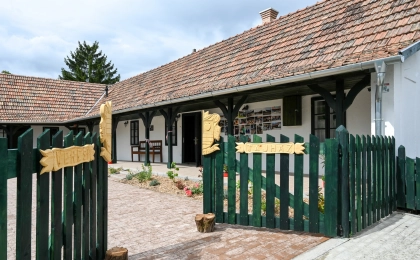|
Juharlevelű platán (Platanus x acerifolia) (Carl Ludwig Willdenow,1797) |
|
|---|---|
|
A juharlevelű platán (Platanus x hispanica vagy Platanus x acerifolia) egyike a legnépszerűbb díszfáknak, a nyugati platánés a keleti platán hibridje. A középkori Spanyolországban keletkezett, akár 30-40m magasra is megnövő, rendkívül hosszú életű lombhullató díszfa. Lombja nagyméretű, 3-5 karéjú levelekből áll, amelyek rendkívül hasonlítanak a juhar fajok leveleire. Apró, jelentéktelen virágai tavasszal nyílnak. Őszre a termős virágokból gömb alakú aszmagterméscsoportokfejlődnek, melyek általában gömbös terméscsoportot képeznek. A platán igénytelen jól alkalmazkodó fa, mely kedveli a jó vízgazdálkodású, tápanyagban gazdag mélyrétegű talajokat. Sajnos mára a platánfánál is számolnunk kell betegségek és kártevők támadásával. Szerencsére, csak ritkán hűvös csapadékos tavaszon támad a platán apiognomoniás betegsége, melynek hatására az éppen kihajtott levelek levélnyelei elfonnyadnak, és a fiatal levelek lehullnak. Az utóbbi években vált jelentős platánkártevővé a platán-csipkéspoloska, melya levelek fonákján szívogat, ennek hatására a levelek színén fehér pontok jelennek meg. A csipkéspoloska soknemzedékes kártevő, kártételük május elejétől lombhullásig tart. |
|
| Maple-leaf sycamore (Platanus x hispanica or Platanus x acerifolia) is one of the most popular ornamental trees, a hybrid of western sycamore and eastern sycamore. An extremely long-lived deciduous ornamental tree that originated in medieval Spain and grows up to 30-40m high. Its foliage consists of large leaves with 3-5 lobes that are very similar to the leaves of maple species. Its tiny, insignificant flowers open in the spring. In the fall, spherical ash-seed clusters develop from the fruiting flowers, which usually form a spherical cluster. Sycamore is an undemanding, well-adapted tree that prefers well-watered, nutrient-rich deep soils. Unfortunately, we now have to deal with diseases and pests on the sycamore tree. Fortunately, the apiognomonic disease of sycamore rarely occurs in the cool rainy spring, causing the petioles of the leaves just sprouted to wither and the young leaves to fall off. In recent years, the sycamore lace has become a significant pest of sycamore, sucking on the backs of the leaves, causing white dots to appear on the leaves. The lacy bug is a multi-generational pest, their damage lasts from early May until deciduous.
|
-
Városunk
-
Veresegyház történelme
Ismerje meg településünk múltját egészen jelenünkig
- Testvérvárosok
- Veresi Krónika
-
Veresegyház történelme
- Digitális városháza
- Ügyintézés
- Intézmények
- Zöld Veresegyház






